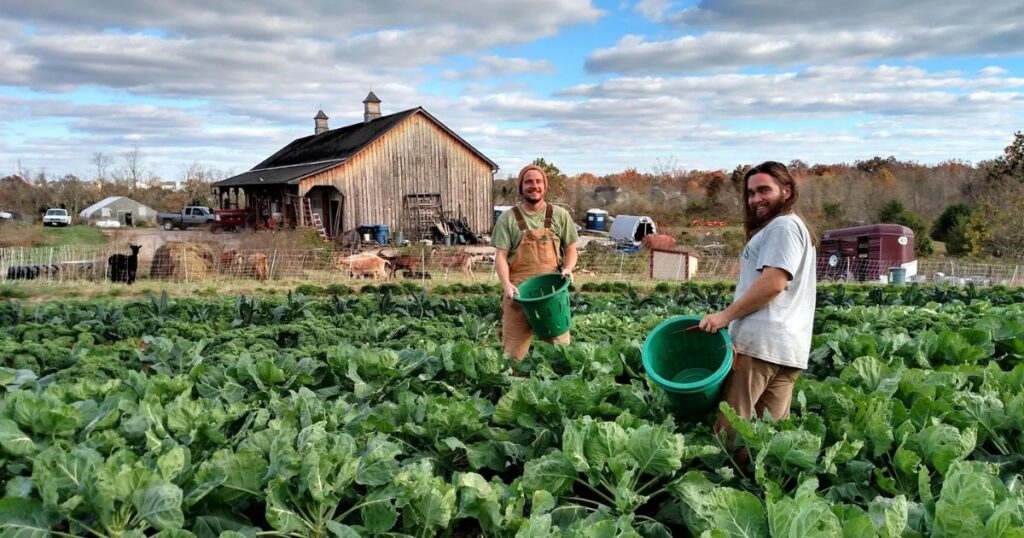Do you know who revolutionized the way we mow lawns? Chances are, you’re unfamiliar with Robert Edmund Burr – the 19th century inventor whose agricultural innovations completely transformed landscaping and farming as we know it. Let’s delve into the extraordinary life of this underrated American pioneer.
Early Life and Agricultural Roots
Born in 1833 in New Britain, Connecticut, Robert Burr’s upbringing was deeply rooted in agriculture. Raised on a family farm, he was exposed to the physical challenges and inefficiencies of farming from a young age.
However, Burr displayed an innate talent for mechanics and engineering, often tinkering and creating pequeño “inventions” to ease work around the farm.
One anecdote highlights his ingenuity – as a child, Burr supposedly crafted a rudimentary hay-baling machine using old wagon wheels and pieces of scrap metal. While crude, his contraption significantly reduced the laborious process of baling hay by hand.
This early invention foreshadowed the impactful agricultural innovations he would go on to create.
More Post:
Tracy Kristofferson – Bio, Age, Net Worth, Height, Single, Facts
The Revolutionary Lawn Mower
In the late 1800s, cutting one’s lawn was an arduous task accomplished strictly by hand with scythes and manual push mowers. Recognizing the need for a better solution, Burr designed and patented the first functional lawn mower powered by a horse or other draft animals in 1899.
His patented design incorporated:
- Large, revolving blades to cut a wider swathe of grass
- Gear mechanisms allowing the blades to spin by simply being pulled
- Lightweight materials making it easier for animals to pull
Burr’s ingenious mower represented a major leap forward in landscaping efficiency and accessibility. Lawns could now be cut exponentially faster with much less manual labor required.
This innovation arguably enabled the emergence and popularity of modern suburban lawn culture across America.
Widespread Adoption and Competition
As word spread of Burr’s “horse-drawn lawnmower”, demand for his patented design skyrocketed both nationally and internationally. Suddenly, large estate owners, parks departments, schools, and eventually even households sought out this groundbreaking device.
However, Burr’s mower also attracted competition from other inventors looking to improve upon or circumvent his patented design. Most notably, he engaged in legal battles with the Townsend Company and Ideal Power Mower manufacturers over intellectual property rights.
While Burr fiercely protected his patents, the rapid spread of his core innovation soon made horse-drawn rotary mowers an indispensable tool across the landscaping industry by the early 1900s.
Other Major Agricultural Innovations

In addition to the lawnmower, Robert Burr’s inquisitive mind produced several other pioneering inventions that modernized various aspects of farming:
The Burr Feed Mill
“The best crop processing machinery I’ve ever used. Burr’s feed mill cut our labor drastically while optimizing crop yields.” – Testimony from a Connecticut farmer, 1912
Burr’s patented feed mill design allowed farmers to process harvested crops like grains, corn, and hay exponentially faster and more efficiently than traditional methods. Its innovative internal mechanisms maximized the extraction of edible materials while minimizing waste.
Crop Harvesting Machinery Capitalizing on his success with the feed mill, Burr went on to create mechanized harvesting equipment to streamline the entire crop lifecycle – from planting, to maintenance, to reaping and processing yields. His harvesting machines could accomplish in a day what previously took farmer crews weeks.
Agricultural Equipment Patents In total, Burr secured over 25 patented inventions related to agricultural machinery and equipment before his death in 1905. This incredible output of practical innovations truly transformed farming practices in fundamental ways.
Life on the Farm and Community Involvement

Despite achieving widespread acclaim through his inventions, Robert Edmund Burr lived a relatively simple existence on his family’s farm in Southington, Connecticut for most of his life. He was an active member and leader within local farming organizations like:
- The Southington Grange
- The Connecticut Seed Improvement Association
- The New Haven County Farm Bureau Federation
Burr was also a strong advocate for agricultural education and modernization. Numerous testimonials and letters from farmers across the state praised Burr’s eagerness to share his knowledge and machinery designs to improve overall crop yields and farming efficiencies.
“Robert Burr spent countless hours consulting farmers like myself on everything from irrigation techniques to his latest mechanical inventions. His passion for agriculture drove constant innovation that benefitted entire communities.” – Excerpt from a letter by a longtime associate
By all accounts, despite his unassuming farmer lifestyle, Robert Burr embodied the quintessential American values of hard work, ingenuity, and community.
Conclusion
Robert Edmund Burr may not be a household name, but his profound impact on agriculture and landscaping cannot be overstated. From revolutionizing lawn mowing, to transforming crop harvesting and processing, to an array of other farming machinery – Burr’s inventions modernized centuries-old practices stuck in inefficient traditions.
His pioneering spirit, entrepreneurial drive, and agricultural expertise truly exemplified the American ideals of innovation and dreaming bigger. While incredible contributors like Burr are often underappreciated, his well-deserved induction into the National Inventors Hall of Fame in 2022 has sparked renewed interest in this unsung hero’s incredible life and legacy.
I encourage you to explore more about the extraordinary Robert Edmund Burr and other influential yet overlooked inventors who fundamentally shaped our world today. Their stories are as inspiring as their creations were impactful.











